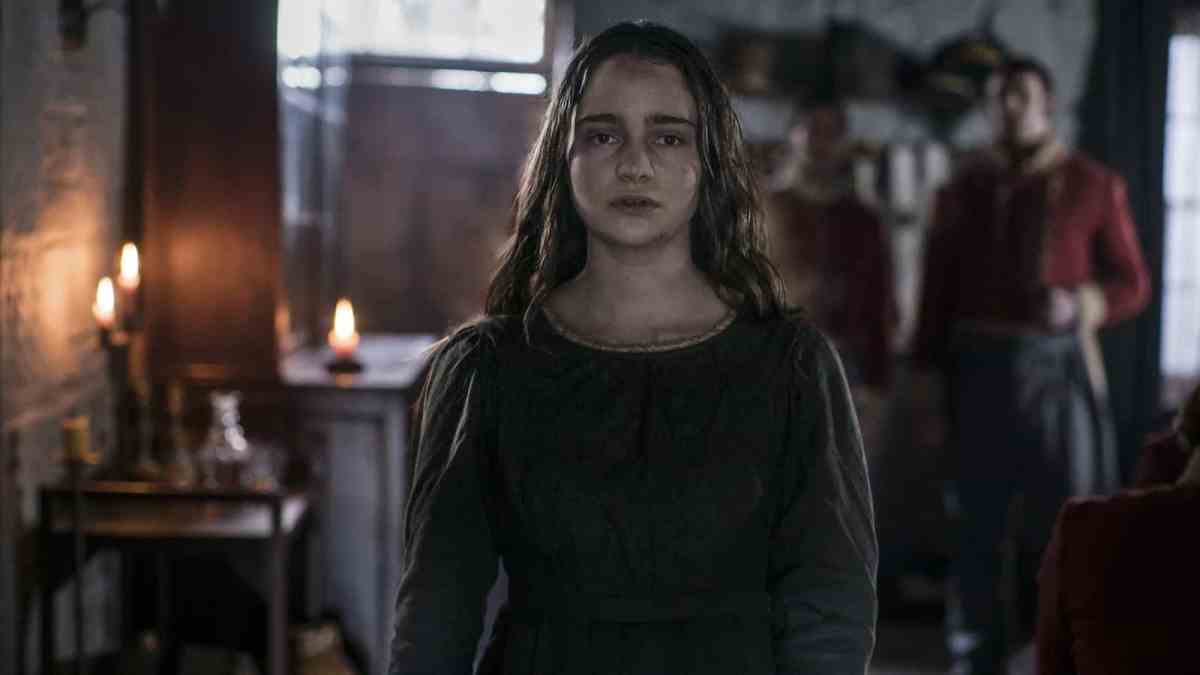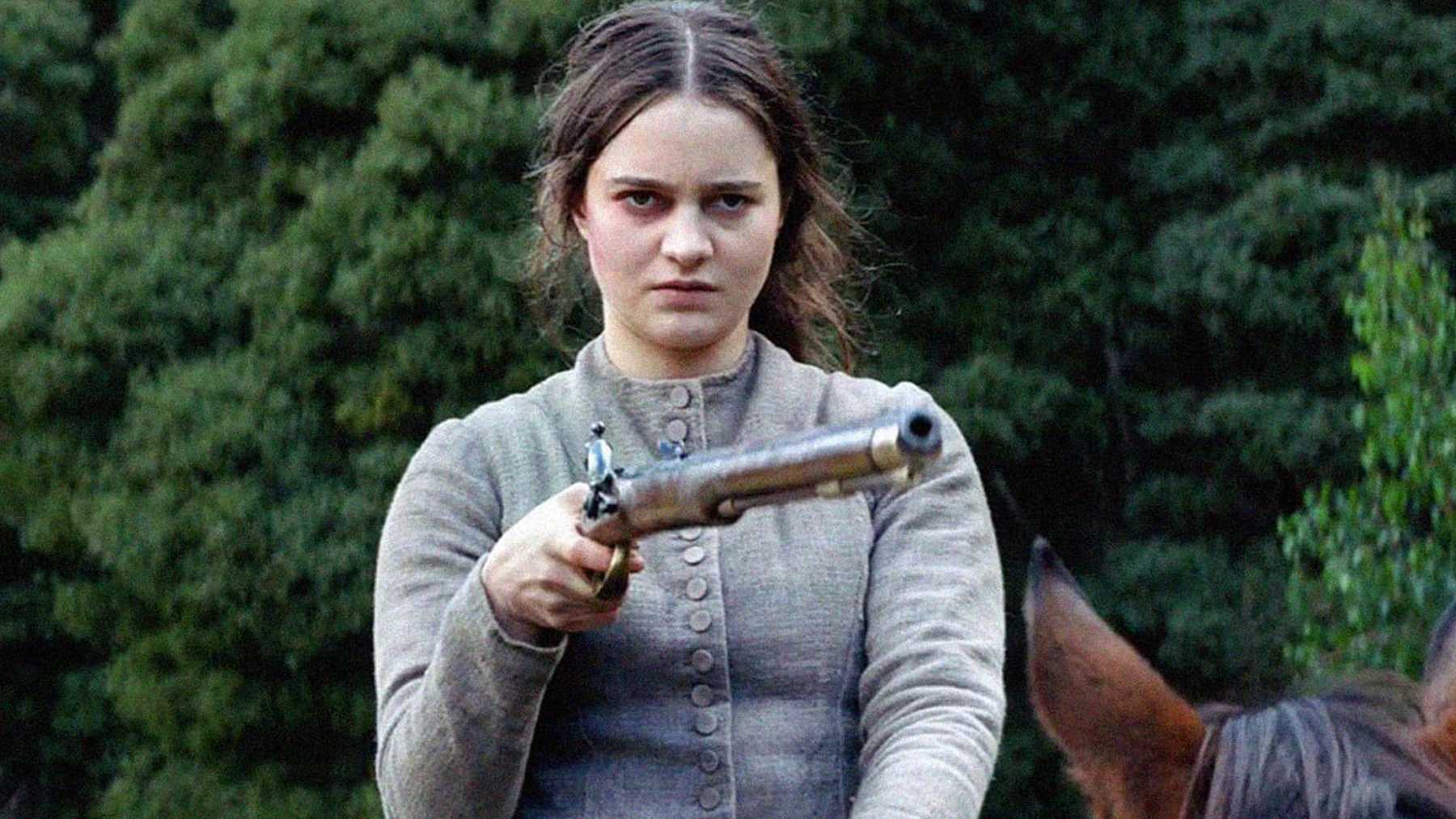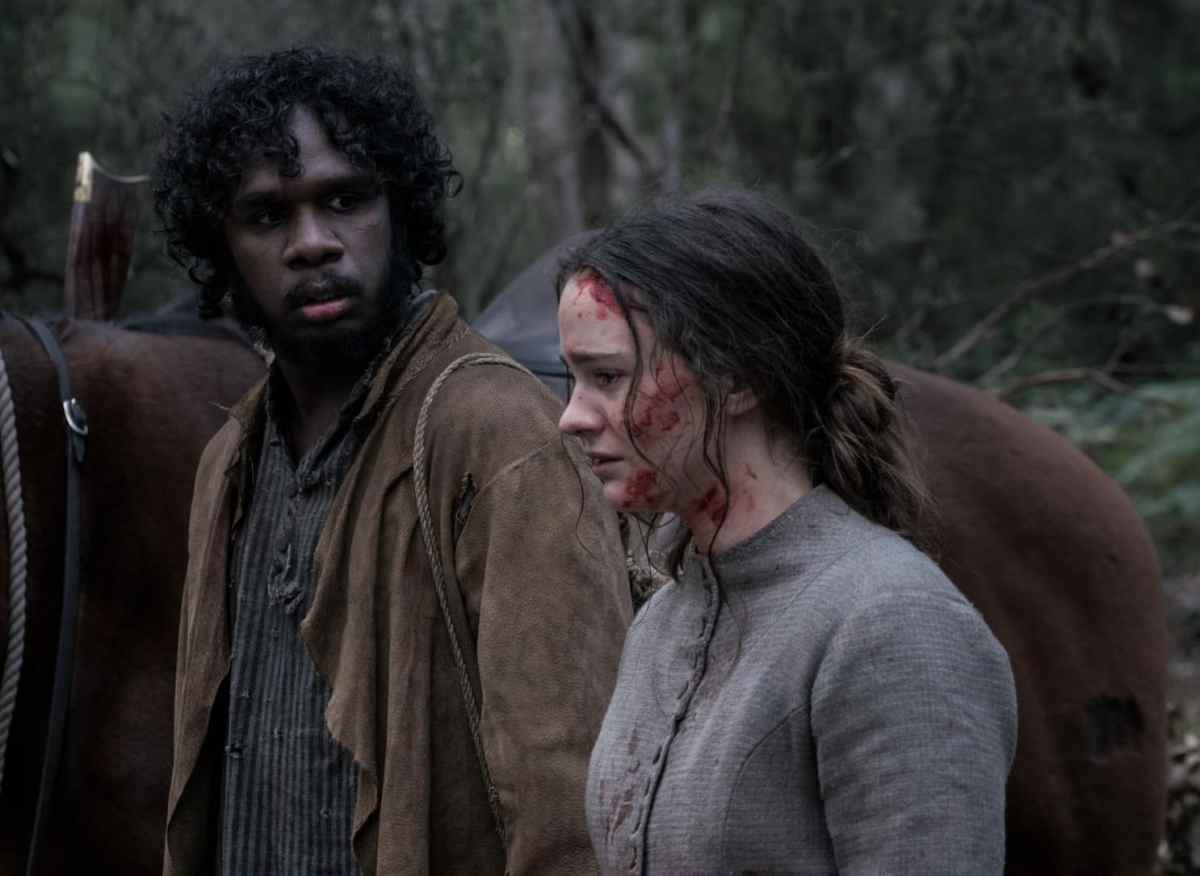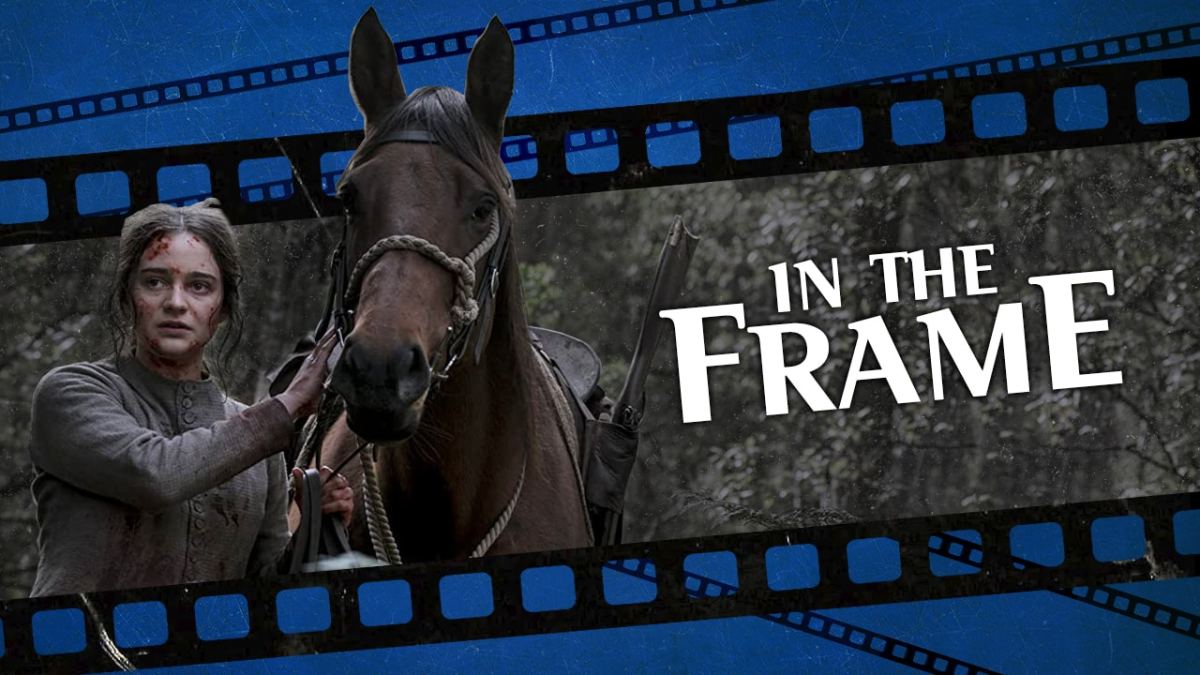NOTE: This piece contains spoilers for The Nightingale.
In fiction, the frontier typically represents freedom. In Jennifer Kent’s The Nightingale, the frontier is nothing but a prison in which the inhabitants trap themselves.
The Nightingale is set in Tasmania in 1825, while the island was a British penal colony. Clare Carroll (Aisling Franciosi) is a former Irish convict who lives with her husband Aidan (Michael Sheasby) and their infant daughter. Clare is beholden to Lieutenant Hawkins (Sam Claflin), who commands the local British unit. Hawkins has promised Clare and her family freedom but has consistently refused to deliver the letter that would allow them to leave.
During an inspection by a visiting officer, Hawkins is publicly humiliated by the behavior of his men and a drunken argument with Aidan over his refusal to release Clare from service. Desperate for a promotion that would rescue him from this dead-end assignment, Hawkins vows to ride north and appeal directly. However, before leaving the outpost, Hawkins pays a visit to the Carroll family, accompanied by Sergeant Ruse (Damon Herriman) and Ensign Jago (Harry Greenwood).
Within the modest Carroll homestead, the situation quickly escalates. Hawkins murders Aidan. A panicking Jago kills the infant child when it refuses to stop screaming. Both Hawkins and Ruse rape Clare and leave her for dead. Clare survives the ordeal. With the help of an indigenous tracker named Billy (Baykali Ganambarr), Clare pursues Hawkins and his expedition through the wilderness. Clare will have her vengeance.

The basic plot of The Nightingale evokes classic westerns. Kent even quotes an iconic shot from John Ford’s The Searchers towards the end of the film. However, The Nightingale reverses the core dynamics of that earlier western. In The Searchers, military veteran Ethan Edwards (John Wayne) sets out to save his niece Debbie (Natalie Wood) from an indigenous menace. In The Nightingale, Clare seeks to avenge herself upon the military officers with the assistance of an indigenous guide.
In American westerns, the frontier traditionally represents freedom. For the settlers arriving from Europe, the frontier was a fresh start and a new beginning, an opportunity to start anew. In traditional westerns, the only true tragedy of the frontier was that it inevitably ended, whether literally or metaphorically. The tragedy was that the vast continent eventually gave way, whether to the unyielding Pacific or to the advancing structures of civilization.
Of course, to be fair, recent decades have seen something of a shift in the portrayal of the western frontier in American popular culture. Movies like The Revenant and Bone Tomahawk treat the frontier as a place of horror. The Hateful Eight literally reworks The Thing as a western, imagining an unlikely assemblage of frontier folk trapped in a “white hell” playing a grim pantomime. These revisionist westerns exist in contrast to those earlier fantasies.
The Nightingale belongs to a relatively recent subgenre of Australian westerns, along with movies like The Proposition and Sweet Country. These films tend to be more brutal and less romantic in their portrayal of the uncivilized frontier, of the horrors that occurred in these lawless environments. The Nightingale is a particularly tough watch. Its depictions of violence have provoked some minor controversy, with audience members walking out during early screenings at the Sydney Film Festival.

In The Nightingale, the frontier does not represent freedom. Instead, it is a prison. This is reflected in a variety of ways, right down to how Kent films the action. In contrast to the spectacular Vista Vision cinematography associated with classic westerns, Kent opts for the more claustrophobic and suffocating 1.375:1 Academy ratio, which ironically predates widescreen. The Nightingale tends to avoid sweeping landscape shots, instead opting for more intense handheld closeups – often on faces.
The characters in The Nightingale are trapped. A lot of the movie unfolds in “the bush” so that the characters are constantly surrounded by dense forests. When the film uses establishing shots, the frame is often deliberately cluttered. Even in the wild, Clare cannot clearly see the moon. It is often partially obscured by tree branches or clouds. When the audience can see the sky, it is often cloudy and gray. The atmosphere of The Nightingale might best be described as “oppressive.”
Characters in The Nightingale are often prisoners, whether literally or figuratively. By the time the film starts, Clare is no longer technically an inmate, but she is effectively Hawkins’ prisoner. Although technically the officer in charge, Hawkins has come to see himself as just as much a prisoner of his surroundings. “I took on this post with the promise it would be one year,” he complains. “Three years later I’m still here.” This mirrors Clare’s frustrations at still being trapped in his service.
The prisons in The Nightingale do not always have bars. Hawkins boasts about providing Clare with a hut and a horse before sexually assaulting her. Even the landscape itself is a trap. Horrified by their callous murder of Aboriginal people, the indigenous guide Charlie (Charlie Jampijinpa Brown) conspires to imprison Hawkins and his men in the vast wilderness with no clear way out. Kent shoots Tasmania like something from a horror film, in washed out grays with gnarled tree limbs.
Hawkins repeatedly boasts that he has “civilized” the region. Even ignoring the colonial implications of his phrasing, it is clear that Hawkins is lying. His men are tasked with imposing order on the region but are wretched degenerates prone to drunkenly firing their weapons at the moon. Sergeant Ruse is terrified of Hawkins, is keen to sadistically wield his power over those under him. At one point, Ruse kidnaps and rapes an indigenous woman (Magnolia Maymuru) that he finds wandering in the forest.

The Nightingale argues that human beings build these prisons for themselves, that people trap each other because they can. Hawkins takes out his rage at a failed career on Clare, because he holds power over her. In turn, Clare initially treats her guide Billy like a prisoner. Holding a shotgun, she forces him to march ahead of her. In a lawless world, that is how power dynamics work. Those with power wield it over those without. This pattern repeats itself. Everybody is both prisoner and jailer.
There is no small irony in this. The Nightingale repeatedly underscores how much Clare and Billy have in common. Clare lost her family to Hawkins, but Billy lost his entire extended family to the British. “You know what it’s like to have a white fella take everything you have,” Clare pleads with Billy at one point in the film. Clare is known as “the nightingale” because of her singing voice and the song she performs for the soldier, while Billy’s original indigenous name (Mangana) translates as “the blackbird.”
Naturally, as the pair complete their journey, they come to understand one another a little bit more. Clare and Billy become sympathetic to one another, to the point that it is ultimately Billy who takes it on himself to complete the revenge against Hawkins. However, even in its closing minutes, The Nightingale suggests that Clare and Billy are alien to one another. The pair reach the end of the frontier, standing together on a beach as the sun rises over the horizon.
In those final moments, both Clare and Billy reject the common tongue imposed by the British. Clare recites her song in Irish, while Billy sings in Palawa kani. Neither can understand the other. As the sun rises, Kent offers a rare wide shot that reveals the two are not standing together on the shore. Instead, they are spaced apart so as to symmetrically frame the rising sun. Even here, at the literal end of the frontier as a new dawn rises, Billy and Clare stand worlds apart.
It is a beautiful and bleak ending, one that remains true to the core themes of The Nightingale. The real bond between Clare and Billy was that they both knew what it felt like to be trapped and imprisoned. That was the level on which they could understand one another. Even as the sun climbs in a (relatively) clear sky over the ocean, The Nightingale suggests that Clare and Billy have been trapped so long that there may not be anything left to bond them together.
At least, having reached the end of the frontier, they are finally free — as much as they can be in the world of The Nightingale.





